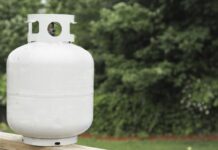Are you looking to install a garage floor but aren’t sure how to do it?
Installing a garage floor on your own may seem like an impossible task. However, with the right tools and know-how, you can easily install a garage floor without professional help.
Read this guide to learn how to install a garage floor.
Easy Installation Options: Mats or Tiles
There are two main options for easy-to-install garage flooring: mats or tiles.
Garage Floor Mats
Garage floor mats come in many different sizes, colors, designs, and durability levels. Mats do an excellent job of enhancing the look of your garage floor while also protecting it from wear and tear.
To install a garage floor mat, all you need to do is sweep the concrete before installation. If you choose to cover your entire garage floor with a mat, you’ll only need a utility knife, tape measure, and straight edge to get the job done.
Tiles
If you don’t want to install a garage floor mat, the alternative option is to install interlocking garage floor tiles. Tiles can give your garage floor a unique, customized look, and like mats, they also come in various colors and sizes. Tiles are stain-resistant and excellent insulators, and each tile can support thousands of pounds. There are several tile types to choose from, including rigid plastic tiles, wood composite tiles, or flexible garage floor tiles.
Rigid garage floor tiles are typically made from PVC and are about 1/4-inch thick. They can withstand most oils, chemicals, grease stains, and other substances. The flexible tiles are softer and easier to remove than the rigid plastic tiles, and they’re also easier to walk and stand on for long periods of time. While these tiles are easy to clean and fairly durable, they generally don’t hold up well under cars or heavy machinery. Many people prefer to place flexible tiling under workbenches. Wood composite tiles can support a lot of weight and are easy to install. However, keep in mind that they expand and contract during temperature changes, so you’ll want to leave a tiny bit of space between each tile.
Like garage floor mats, you don’t need extensive carpentry skills to install garage floor tiles. Typically, you just need a saw and tape measure. Most manufacturers also provide easy-to-follow instructions for installing interlocking tiles.
The installation will usually take a few hours, and you only need to sweep the garage floor beforehand.
Moderately Difficult Installation Options: Vinyl Flooring
If you’re not afraid of the challenge, you can look into some more difficult-to-install flooring options. If you’re up for something that requires moderate DIY skills, consider installing vinyl composite tile or peel-and-stick vinyl flooring.
Prepping the floor is easy for both installation processes. However, it does require some skill to lay the tile squares evenly. You’ll need to begin by thoroughly cleaning your garage floor, repairing any large cracks, pitting the floor, and filling in any contraction joints.
You’ll need a notched trowel to spread the glue, mops for cleaning the floor, and supplies for waxing the floor. You may also want to rent a floor buffer to help maintain your vinyl floors.
Difficult Installation Option: Epoxy
If you’re really up for a challenge, consider applying high-quality epoxy to your garage floor. Epoxy can be more difficult to install, as it requires you to take time preparing the concrete, and you need to be very careful when applying the epoxy.
You’ll need to follow the instructions very closely, and we recommend having someone help you apply the coating.
Choosing the Right Epoxy
You have three main types of epoxy paint to choose from for your garage floor: solid epoxy, solvent-based epoxy, and water-based epoxy. Solid epoxy is the most expensive and difficult to handle, as it hardens quickly. However, it will give your garage floor a nice, smooth finish.
Solvent-based epoxy is available in a wide range of colors and contains 40-60% solids. The solvents are potentially hazardous, so you’ll need to wear a respirator when applying the finishing. Water-based epoxy also contains 40-60% solids. However, it doesn’t contain any hazardous fumes. You can find this epoxy at most hardware stores or home centers.
If you’re looking for something even stronger than epoxy, check out polyurea.
Tips for Applying Epoxy Floor Coating
Once you’ve chosen the type of epoxy paint you wish to work with, it’s time to apply it. Before you begin, you’ll need to thoroughly clean and patch your floor. You’ll also need to calculate how much mixture you need to cover the surface of your garage floor. Many epoxy kits only include enough paint for one coat, and you’ll likely need to apply two coats.
Keep in mind that the epoxy mixture is usually only workable for around 2 hours, so you’ll need to work quickly. Ideally, you want to apply the paint when the outside temperature is between 60-90 degrees. Plan to spend about one day prepping the floor and two days painting it.
We recommend using a flat-edged scraper or shovel to clean the concrete before applying the epoxy. You can also use a power scrubber to clean difficult areas.
How to Install a Garage Floor: Time to Begin
Now that you know how to install a garage floor, it’s time to get started on this DIY project. Make sure you spend time prepping your floor beforehand, and follow manufacturer and safety instructions carefully. Before you know it, your garage floor will look as good as new.
Be sure to check back in with us for more fun garage projects!










